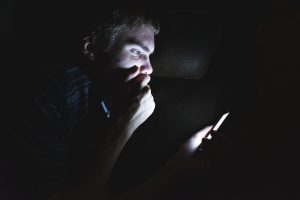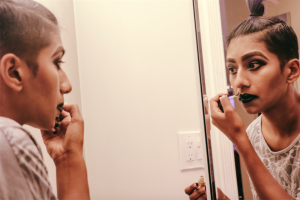Alexandra Kacha’s images challenge heteronormativity through a non-binary gaze
By: Star Welis

Over nearly two decades, Los Angeles–based photographer Alexandra Kacha has refined their craft to be distinguishable as one that both draws from retro aesthetics and cultivates a sense of contemporary empowerment. Operating largely in the realm of lifestyle photography – from the boudoir to the concert hall – Kacha’s body of work is as varied as it is visually stunning.
Through a non-binary gaze, Kacha lends a perspective to body-positive and sex-positive imagery that directly challenges what we so often see in heteronormative media. Kacha’s work has been featured in campaigns for major brands such as Lyft, Target, K-Swiss, Billboard and many more – signifying a refreshing advance towards representing diversity within the mainstream.


STAR WELIS: You have been taking photographs for 17 years and have been in the business for six. Was there any particular thing or moment that inspired you to take that step into doing it professionally?
ALEXANDRA KACHA: My dream was to be a photojournalist. I loved telling stories, I loved following people, meeting people, documenting them. I had a camera around my neck since I was 16 years old and yet it never crossed my mind that I would own a business, or do it full-time.
Sometimes I look back at all the photos I have taken [before starting my business], and can see my business within them, I just had no idea. I feel it is my purpose – to see people, to really see them, with no judgement. I am a reject and I connect with other rejects. I feel there needs to be a space for the artists, queers, allies.
Photography kept on finding me, kept on challenging me. I worked as a server for 12 years and I shot mainly for music magazines like Pitchfork and Fact Magazine, shooting festivals, shooting artists.
I was not making money doing that, so I started advertising boudoir shoots, pregnancy shoots, and weddings. As my schedule began filling up, I quit the restaurant, which was a really scary thing to do. I never believed in myself.
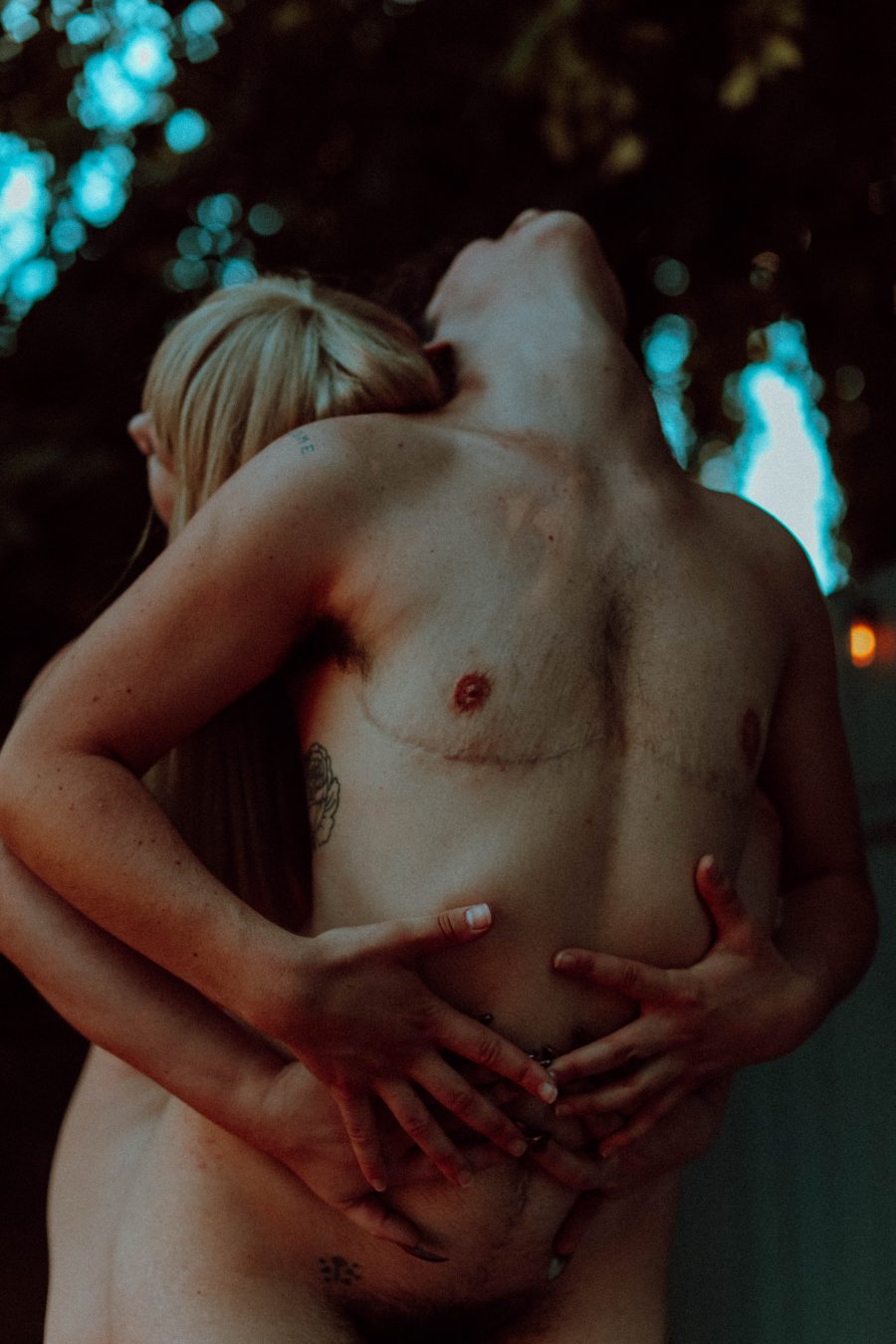
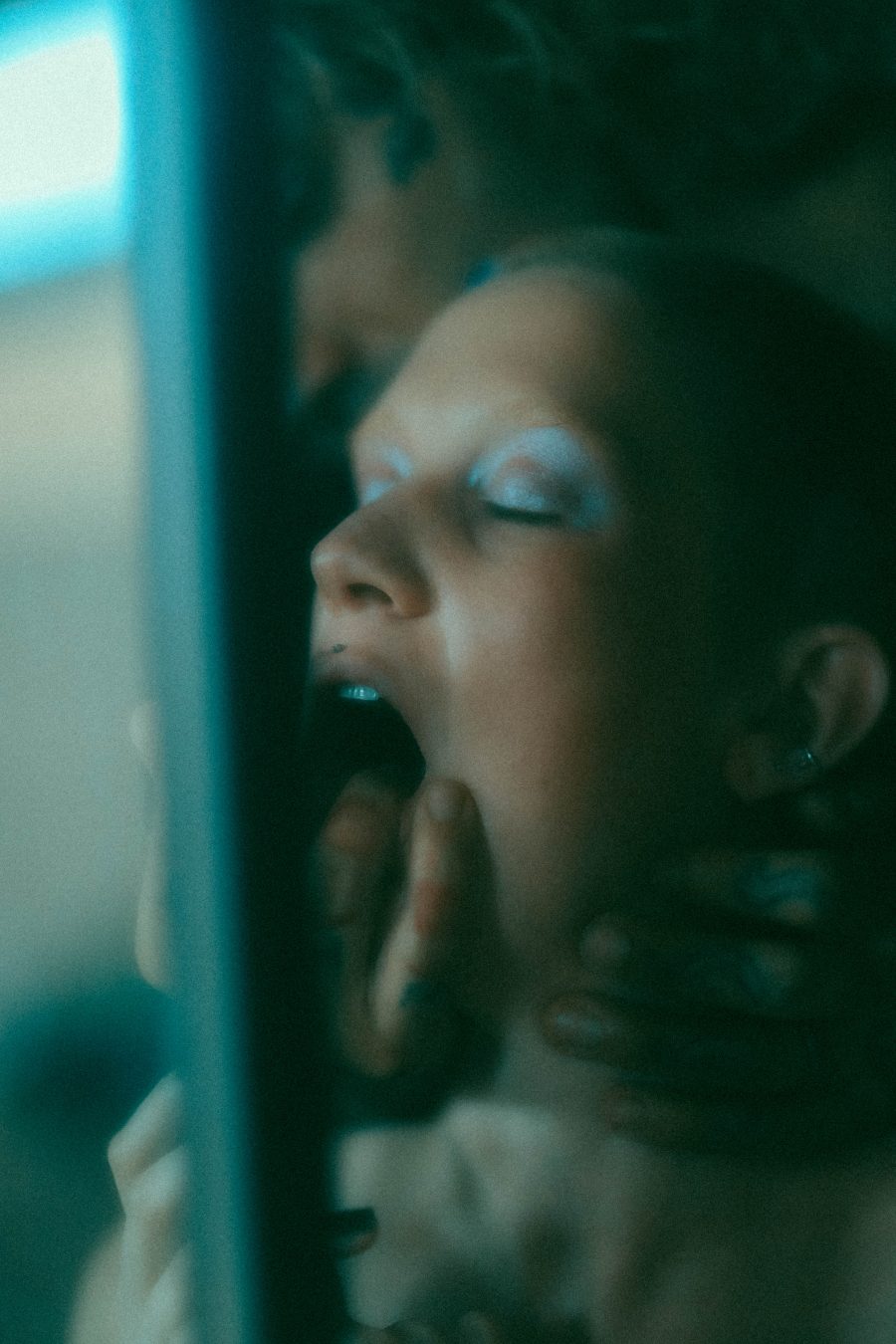
SW: Your images tell beautiful and varied stories. How do you feel your own experiences, particularly as a non-binary photographer, lend themselves to the images you create with your models?
AK: I feel I attract other freaks because I am a freak. I have always been able to connect very deeply with people who recognise me, or seek me out, or truly see me.
I feel every client and subject is sent to me by the universe to evolve and grow. I comfort people, I make them feel safe.
I do think my past has shaped this, again, being rejected and misunderstood. I am not what you would expect as a business owner. I have a lot of shitty tattoos, I am open as a book, I used to be a drug addict – I feel once people meet me, they either get me or they don’t, and they can relax.
I also feel being non-binary makes a safe space for other trans people. I feel that trans people’s gazes are different, their vision is so deep.
SW: Aside from beautiful images, what do you hope models get out of the experience of shooting with you?
AK: I want people to heal when shooting with me, or I want people to make a tonne of money after shooting with me, if I am shooting with sex workers. I want people to have super sexy, editorial photos that would look amazing on a website or hung up in their home.
I love the experience of people seeing what I see through my lens. I have watched so many clients blossom after shooting with me. They find their people. It feels like a big secret club.

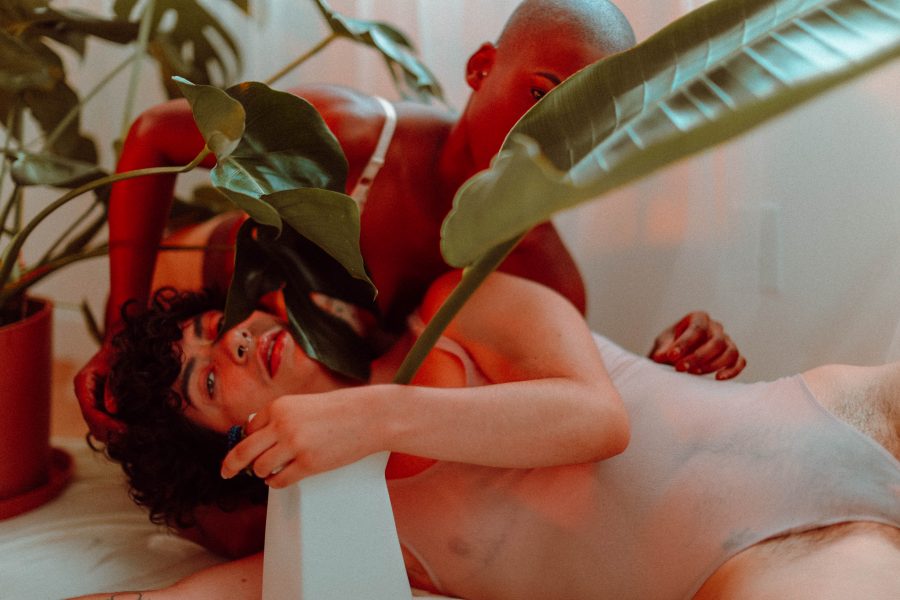
SW: During the COVID-19 pandemic you have expanded your photographic repertoire to offer virtual photo shoots (through Zoom, FaceTime and the like). What has that journey been like so far and what have been some of the pros and cons of this type of shooting method?
AK: When COVID-19 first hit, I spiralled. I had to cancel a lot of photo tours, weddings, pregnancy shoots – it felt so wild!
My cousin showed me this Italian cis male photographer doing these virtual shoots. Nobody was doing them, and I thought, “Hey that is SO cool and with my clients it would be SO different!”
My adrenaline was pumping, and I made some virtual packages, put it on my site, and hoped for the best. Within the first three days I was booked out for a couple of months.
The journey has been really beautiful with these. I feel I am meant to meet all the subjects I shoot through FaceTime. It feels like tiny lessons, meeting each person. I have shot dommes in New York, freaks in Berlin, pregnant people in England, couples being intimate in Canada. I have been all over the world with these!
The pros are definitely that anyone can book with me from all over the world. I love the look of these images as well. They remind me of old webcam shots. I used to cam in college and it just takes me right back there. With the posing – it’s so smutty, so meta, so… naughty?
It can be exhausting as well, for me, especially when someone has never posed nude or even done a boudoir. It is through the computer, so I have to make them feel so safe and comfortable without being there, without the body language.
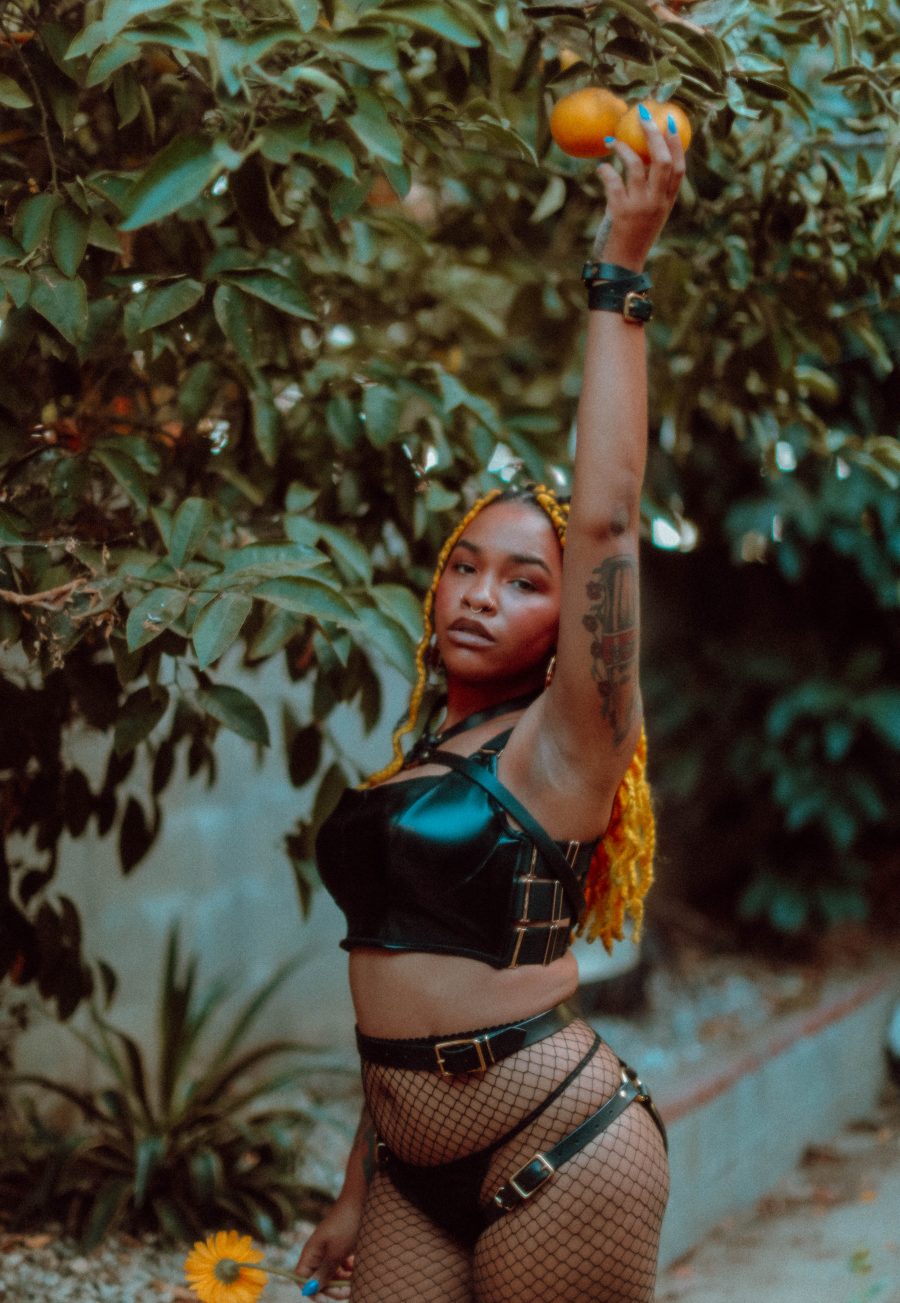
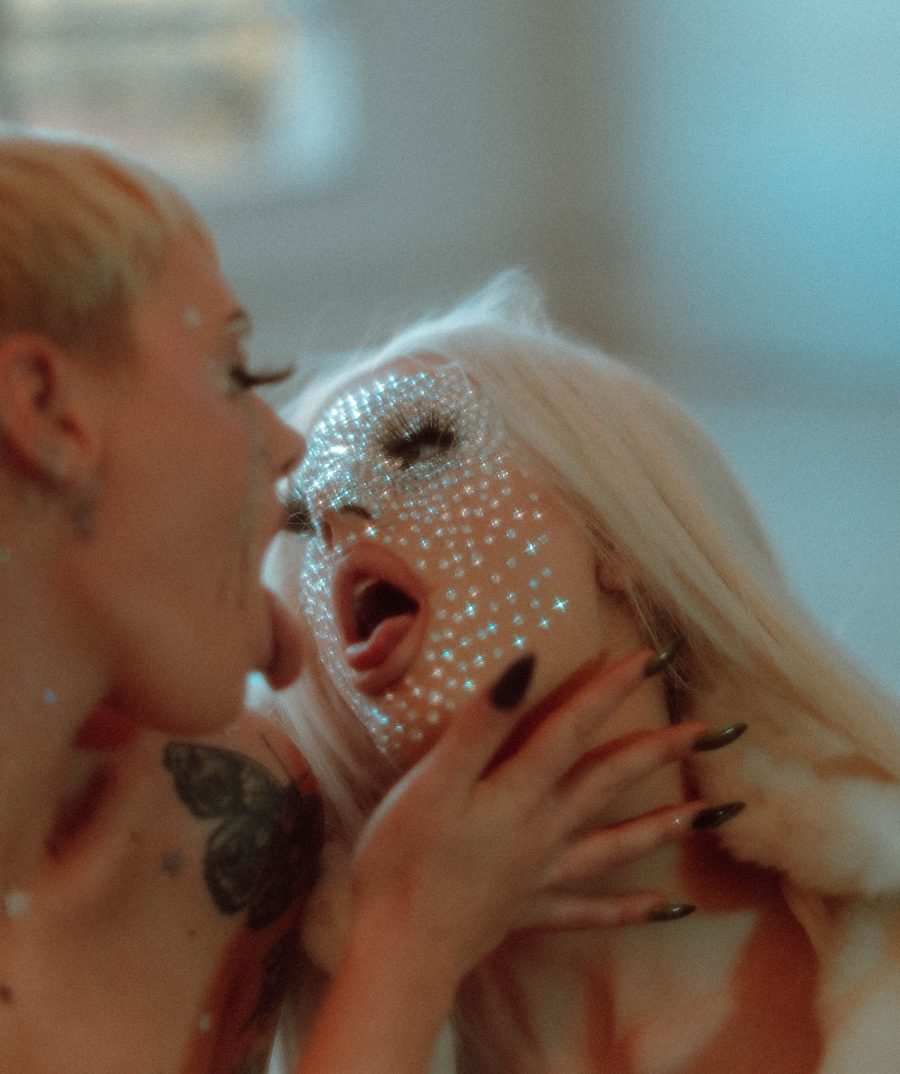
SW: While still very much portraying the content within your images through a lens of realism, your work has a distinct style that incorporates the elements of colour, light and texture to create a mood and aesthetic that is ethereal. Do you think this style is representative of an evolution your work has been through over the years or were there any specific inspirations that led you to this style?
AK: The style and editing of my work has definitely evolved. I used to shoot very experimentally when I was young, I loved using prisms, pantyhose, plastic over the lens – so I feel a lot of my editing techniques are upgrades of that, but finding out how to do it more analogue rather than experimentally.
I used to love photographers Nan Goldin and Petra Collins – the soft glow – they definitely inspired me at two different points in my life where I started to move towards a more dream-like editing style.
SW: Just as the types of photographic work that you do are diverse, so too are the models and visual elements that you portray. In what ways do you think that body positivity and sex positivity inform your work?
AK: It is funny because so many brands and companies steal my images for body- and sex-positivity stuff. I never really tried to go that route, it is just who I am – [they are] just the people I truly actually relate with and know.
When I do some sex campaigns I do showcase my own body in terms of ‘body positivity’, although when some of these images hit the mainstream world, it hurts to see the comments. I forget I am living in a small bubble of freedom, but outside is evil.
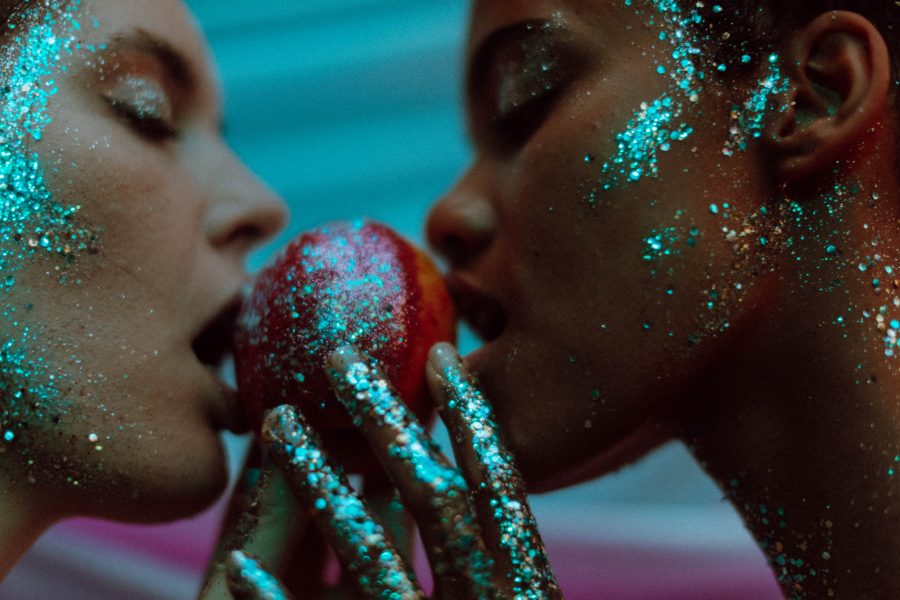

SW: Still so prevalent in much of the kinky/fetish media we see today are images and/or narratives created through a heteronormative lens. In what ways do you hope to inspire the viewers of your works through creating this type of work through a non-binary perspective?
AK: I feel like the non-binary gaze is so different. It is fluid and it understands. I hate seeing heteronormative male photographers inserting themselves into BDSM photos, it makes me cringe.
I try to take myself out of it and focus on making the client money, yet I can see how the gaze is different. I hope that the viewer can see how beautiful everyone is in their own way. I hope that people feel not alone with my work.
SW: In what ways have your explorations within the world of photography informed how you interact with the world outside of it?
AK: I think photography gave me the confidence I needed. I was so soft, quiet, conflict-avoidant – it has taught me how to be direct, how to love myself, how to love others. It is a hard career, it is demanding, and there are so many tiny things people don’t realise photographers have to do.
To keep up, Instagram, that part disgusts me. Sometimes it is just so hard for me to keep up and I try to be honest to followers because people can’t think everyone is perfect, or just successful. There’s ups and downs. They hurt for sure.

SW: How do you hope your work will evolve going forward?
AK: I hope that my work is normalised soon, that people see sex workers for the incredible, resilient, hard workers they are; that people can be hot and be fat; that people can have body hair and feel empowered – I hope that my work becomes the norm.
As for me personally, I want to just keep growing within my craft. I hope to teach some day or do workshops. I am a projector in human design and my purpose is to perfect my craft, become a master.
Star Welis is an artist, writer and photographer that has been working in queer, kink and sex-positive spaces since 2015. Her professional interests lie in the intersections of gender, sexuality and representations within the wider scope of society. When Star is not writing or on set, she can be found cuddled up with her cats and a hot cup of peppermint tea.
This article first appeared in Archer Magazine #15, the FRIENDSHIP issue






